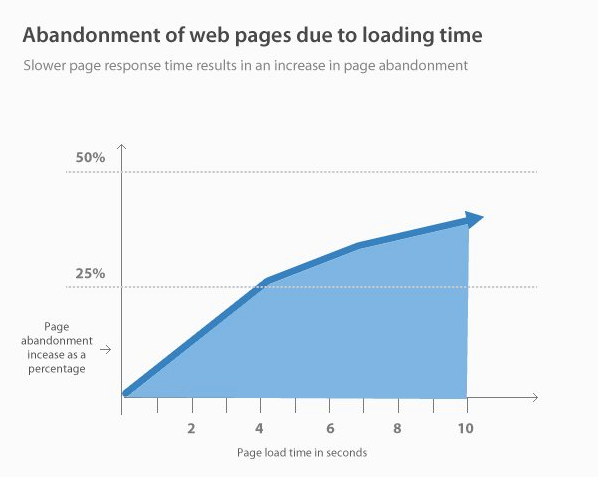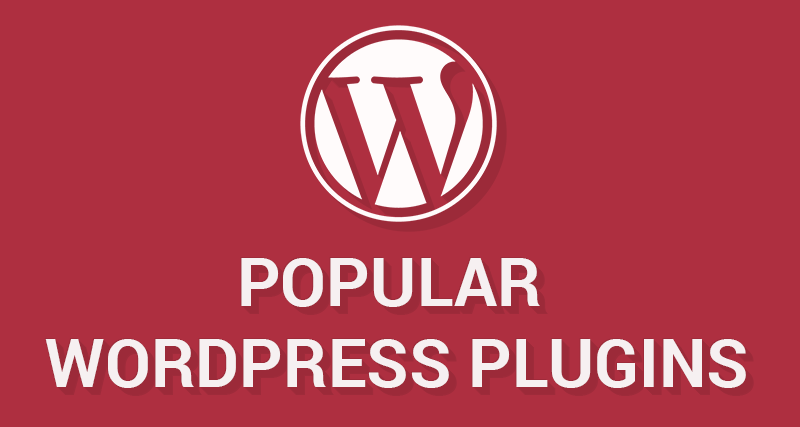How long does your site take to load? According to stats, 47% of people expect a certain page to get load in two to three seconds. If you fail to reach this benchmark, your conversion will suffer big time. It is unarguably the most important factor. In fact, 40% of the visitors will abandon your site or page if it takes more than three seconds to load.

Page abandonment rate is directly proportional to your site’s loading page. Higher the abandonment rate you can safely assume that loading time of your site is also higher.
In this fast world, every person is in rush. We all are impatient- 80% of the people won’t return to your site if it takes longer than 3 seconds in loading. If you observe a high bounce rate and low conversion rate on your website then know that loading speed is a major reason behind it. If the visitor doesn’t get the desired page in few second he will go towards your competitor’s website and certainly won’t return back.
Your website’s speed is also one of the core factors upon which search engine judge your site. Now the real question is how can we improve the loading time? Let’s say if my Cox cable site is experiencing some loading time issues, I’d first check and fix the following 7 factors to solve the problem.
1. Reduce HTTP requests
Not familiar with it? Well, I’ll just keep it plain and simple. HTTP stands for hypertext transfer protocol which requests and responses the transfer of data from one point to another on the network.
When you request for a website, you actually tell your browser to create a TCP connection that responds to the URL. Your device will send an HTTP request to the server to open that particular webpage.
Yahoo stated that 80% of the loading time is consumed on downloading different parts of the website. Let me tell you longer the landing page longer will be the bounce rate. HTTP request will be generated for every element the page contains i.e. the script, images, style sheets etc.
To reduce the HTTP requests you need to minimize these elements as much as possible. Get your developer onto work and ask him to identify the elements which can be eliminated and won’t have much effect on the functionality of the site.
2. Reduce the TTFB
Time to first byte (TTFB) is basically the length of time a browser waits to receive the first byte of data from the server. Google suggests that TTFB of a site should be less than 200ms for ideal performance. Memory starvation, slow routing, frameworks, inefficient database queries, slow application logic, and resource CPU starvation can be major reasons why your server is not responding fast.
3. Select efficient hosting
Hosting plays an important role in the speed of a website. Most people go for the cheaper ones to lessen the cost but they are just compromising over the quality. If you don’t want your website to crash from a rush of traffic, then you need to upgrade your hosting service. There are three options to host your website:
- VPS
- Shared hosting
- Dedicated server
If traffic is making your landing page load slower then consider moving to the dedicated server. It is an expensive option but reasonable enough in this case.
4. Reduce the response time of your server
The page loading speed is directly associated with the DNS lookup time. DNS (Domain name system) is a server containing the Database of IP addresses and names of hosts. When you request to access a particular URL on the browser, the DNS server sends your IP address to show the location of the user. If this simple step starts taking a long time then you might want to consider switching your DNS provider with better service.
5. Enable Caching
When you visit a website, an element from each page you visit get stored in temporary memory called cache. If you visit the site again, the browser can load the page by using the stored data in the cache memory without sending another request to the HTTP server. This point is very helpful in minimizing HTTP requests. It can prove to be great for those who are using visual elements to improve the look and feel of the site. The enabling cache can speed up the loading process for repeat visitors.
6. Simplify and combine the files
As each factor contributes to the loading time of your webpage because they require separate HTTP requests. All the HTML, JavaScript and CSS files which are sending a different request for different elements should be simplified and combined to reduce the loading time. It basically eliminates unnecessary characters like white space, formatting, and new lines etc.
7. Better implement asynchronous loading
After simplifying and combining the JavaScript, HTML and CSS files, you need to optimize the way these elements get loaded onto your page. Two options are used for loading CSS and JavaScript files:
- Asynchronous
- Synchronous
Synchronous loading means loading the elements one by one in a certain order. Whereas asynchronous loading will load all the scripts at the same time. This strategy helps in speeding up your site rather than loading one element at one time. Synchronous loading systems can slow down the loading speed of your page.
The above mentioned seven principles have been deduced after wide research. No web developer can deny them. If you’re facing speed problems with your website then check these seven factors right now. I hope this article has been of help in improving your website’s speed.


